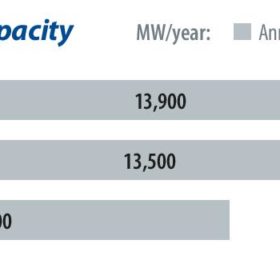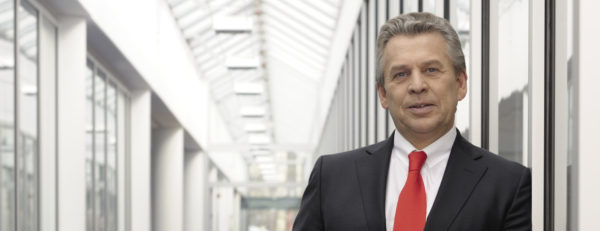
There’s nothing new under the sun, and this is ever so in PV. So it should come as no surprise that the hottest new cell technology has actually been in mass production for decades. But is now the time for heterojunction to move into the mainstream? There are serious challenges to overcome if so, but momentum is undoubtedly building.
From pv magazine 09/2020
On June 30, the leading product innovations in the European PV market took center stage, although the stage was virtual – it’s 2020, after all. While the physical Intersolar Europe, a long-running highlight of global solar industry calendars, did not take place, organizers Solar Promotion went ahead with its awards program, including the Intersolar Award, which has recognized innovative new PV products for the past 12 years. And in 2020, a heterojunction (HJT) module was selected as the leading PV panel.
REC’s Alpha series was launched at the Intersolar Europe event, now a part of The smarter E, the previous year. And while neither HJT itself nor the Meyer Burger technology inside is new, the award judges were satisfied by both the new module’s performance and REC’s roadmap for its Alpha series.
“The jury was impressed by REC’s game-changing technology,” the official communication reads, “with no light-induced degradation, high efficiency, high power density, and one of the lowest temperature coefficients in the market.”
Additionally, the jury noted that the Meyer Burger Smartwire cell technology deployed by REC in the Alpha results in a lead reduction of 81%, when compared with conventional modules, and pointed to their goal of becoming lead-free by the end of the year. While REC does not explicitly communicate that it is deploying Smartwire in the Alpha series, Meyer Burger has long advocated that its HJT and Smartwire make the ideal combination for high efficiency modules.
Next stage
The award represents a feather in the cap for both REC and Meyer Burger, which reportedly entered into an exclusive licensing agreement and profit sharing agreement for the development of the Alpha. In pure performance terms, the Alpha is certainly demonstrating at scale that both efficiency and power output targets can be achieved. At the time of picking up the award, the Alpha had hit 380 W in a 60-cell configuration, it deploys the half cut and dual module design REC pioneered with its TwinPeak series, and a module efficiency of 21.7%. Meyer Burger itself presented a 22% efficiency HJT module, produced in partnership with Fraunhofer ISE, at Intersolar 2019. But do these accolades and results herald the coming dawn for HJT, after many years of being the “next big thing” in PV cell technology?
“I think it’s true that momentum is building for HJT,” says Jenny Chase, manager of BloombergNEF’s Solar Insight team. “There are now three Chinese manufacturers working on [HJT] machines and there are a bunch of companies trying to get into this, along with Meyer Burger who are very serious technically.”
BloombergNEF addressed the expansion of HJT in its annual solar manufacturing survey for 2020, published on Aug. 19 and adroitly titled Cells and Modules 2020: Make it Bigger, If Not Better. In it, Chase’s team sets out the HJT equipment makers, alongside Meyer Burger, as being Applied Materials, Suzhou Maxwell, Shenzhen SC, and Ideal Energy. The BloombergNEF team note that these equipment suppliers deploy Chemical Vapor Deposition (CVD) for the amorphous silicon (aSi) deposition on both sides of the HJT cell. Meyer Burger deploys plasma enhanced chemical vapor deposition (PECVD) for the a-Si passivation, via its HELiA PECVD platform. The company has considerable experience in PECVD processes, having supplied the technology widely when the initial PERC investment cycle was underway.
Cost down
The significance in the equipment development underway, both by international suppliers and Chinese tool makers, is that the capex investment required has long been considered a major headwind for HJT adoption. In August 2019, PVInfoLink reported that a 1 GW HJT line would command an investment of CNY 750,000-850,000 million ($108.4 million-$122.8 million), compared to CNY 250,000 million for 1 GW of PERC. At last month’s SNEC, pv magazine discovered that the capex required for HJT is now reported to have fallen to CNY 500,000 million.
However, equipment costs for HJT are not the only impediment it faces. “For the price of HJT modules to come down, manufacturers need to move to a low silver consumption, either a copper plating or screen printing solution and that is not yet used in production,” says Pierre Verlinden, the former Trina Solar chief scientist who now is the head of the consultancy Amrock.
Verlinden’s view concurs with that of the BloombergNEF team, which observes that the low-temperature pastes required for HJT production come at a 20% premium at present. Standard cell metallization is potentially damaging to the a-Si semiconductor layer due to higher temperatures. “It means that these cells aren’t going to be cheap,” says Chase. “So, manufacturers will need to find someone who is willing to pay extra.”
Performance benefits
To command a higher price, the current generation of HJT modules will have to deliver on power output. It’s performance advantages over conventional p-type PERC are the superior temperature coefficient and enhanced bifaciality – the HJT solar PV cell being identical on both sides by design. “Optimized HJT and Smartwire has a bifaciality of 93%, as confirmed by TÜV, compared to PERC’s of maximum 75%,” says Meyer Burger CEO Gunter Erfurt, who is currently steering the company towards its future as a European solar cell and module maker. “This means higher energy yield, also because of a lower temperature coefficient, and lower losses due to the combination with our proprietary Smartwire.”
And while there is considerable cause for excitement in the progress non-Chinese manufacturers, or aspirants, like REC and Meyer Burger are making, it is likely the manufacturers within the PV production powerhouse that will tilt the ledger in favor of HJT – if, that is, it is to tilt.
“The big question for HJT to become the mainstream technology, for the price to come down, is whether the whole supply chain can align, making cheap tools, cheap technologies, and cheap material,” says Verlinden – and it is here we see the industry marching in step while simultaneously competing fiercely for advantage. Sometimes termed “co-optition”, the dynamic can lead to rapid, coordinated but competitive innovation, resulting in cost declines and it is evident within China’s PV manufacturing landscape.
Risen, Tongwei, Canadian Solar and Talesun are some of the biggest names among the Chinese PV players publicly pursuing HJT at present, with active manufacturing programs underway. But the list of HJT announcements even from new entrants to PV manufacturing, such as the massive plans of Shanxi Coal International, is growing. BloombergNEF tracks 18 companies currently pursuing HJT globally, for a combined capacity of 36 GW. However its analysts note: “many plans may not be realized soon, or ever.”
Interview: Wet chemistry, PVD key enablers
Increasing equipment throughput is an important way in which HJT manufacturers, and their equipment partners, can improve the technology’s competitiveness. Stefan Rinck, the long-serving CEO of German toolmaker Singulus Technologies, believes that the conditions are right for just such progress to be made.

Image: Singulus Technologies
pv magazine: Why do you believe now is the time for HJT?
A lot has been done, by Meyer Burger, Singulus and others to introduce newer machines with higher productivity and lower costs, and that is helping HJT to pick up very fast. A lot of companies in the beginning thought that TOPCon was a logical step from PERC, but now they find out TOPCon is not as easy as first expected. TOPCon requires a lot of R&D resources to come to a good machine and production setup. Cost reduction in high efficiency cell processes is still not proven.
What production processes does Singulus supply for HJT production?
We are providing and supplying the wet chemistry, where we have the leading position in the market, because we have sold a lot of machines all over the world. We can increase the throughput of these machines to a level of 12,000 wafers an hour, for M6. This a huge number and results in up to 550 MW annual capacity for HJT. Then the PVD [Physical Vapor Deposition] machine, we have now delivered several PVD machines [for HJT production] and they are showing excellent performance.
Is PVD commonly used in HJT production?
It is new, but now it is commonplace and compared to alternative processes like single-sided Reactive Plasma Deposition (RPD) and it offers a number of advantages. We are putting the ITO [indium-tin-oxide] layer on top of the cell and it is critical because of both the conductivity of the layer stack and also the transparency. So, you have to find the right balance and that is what we did with our machine. On top of that we have a very good uniformity in the machine, which means fantastic peak efficiencies.
In the beginning, some companies made the test in parallel and found out the PVD is now as good as the old RPD process and has no disadvantages anymore. In fact, PVD has some advantages because the efficiency on average is much better – there is lower variety as the layer stack homogeneity is perfect. RPD systems offer only bottom-up processing, which means more handling.
Lắp đặt điện mặt trời Khải Minh Tech
https://ift.tt/2X7bF6x
0906633505
info.khaiminhtech@gmail.com
80/39 Trần Quang Diệu, Phường 14, Quận 3
Lắp đặt điện mặt trời Khải Minh Tech
https://ift.tt/2ZH4TRU
Không có nhận xét nào:
Đăng nhận xét